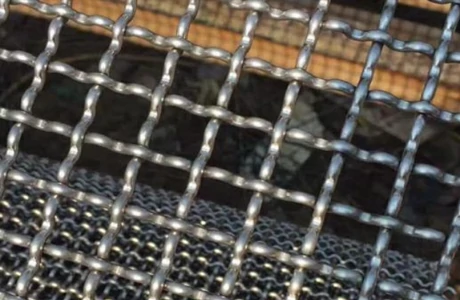Understanding Wire Mesh Sizes for Optimal Selection in Various Applications
Understanding Wire Mesh Sizes A Comprehensive Guide
Wire mesh is an essential material used in various industries and applications, ranging from construction and architecture to agriculture and automotive fields. It consists of a grid of interwoven wires, creating an open weave which can serve multiple purposes like screening, reinforcement, and filtration. One crucial factor that determines the utility and effectiveness of wire mesh is its size, which includes the wire diameter and the size of the openings between the wires.
What Are Wire Mesh Sizes?
Wire mesh sizes are defined by two primary measurements the wire diameter and the opening size. The wire diameter refers to the thickness of the individual wires that make up the mesh, which can greatly influence the strength and durability of the mesh. The opening size, or mesh size, is the distance between adjacent wires. This can be measured in inches or millimeters and is critical in determining what materials can pass through the mesh.
Wire Diameter
Wire diameter is commonly specified in gauge or in thickness measurements. The American Wire Gauge (AWG) system is frequently used in the United States, where a lower gauge number indicates a thicker wire. For example, a 10-gauge wire is thicker than a 20-gauge wire. In contrast, metric measurements (in millimeters) are preferred in many other countries. The choice between gauges or metric often depends on industry standards and regional preferences.
Mesh Size
Mesh size, frequently expressed as a count of how many openings are present per linear inch, is another significant feature of wire mesh. For instance, a mesh labeled 20 mesh means there are 20 openings per inch in one direction. This measurement indicates the size of the spaces between the wires. Smaller mesh sizes, such as 100 mesh, have finer openings, while larger sizes, like 1 mesh, provide larger gaps.
wire mesh sizes

Applications of Different Wire Mesh Sizes
Different applications require specific wire mesh sizes. In construction, for example, larger diameter wires with fewer openings (such as 1/2-inch mesh) are used for reinforcement in concrete structures. On the other hand, agricultural applications may require finer meshes (such as 100-mesh) to keep out pests while allowing air and sunlight to reach crops.
In industrial filtration applications, the appropriate mesh size is crucial to effectively separating particles from liquids or gases. A mesh size that is too large will allow undesirable materials to pass through, while too fine a mesh can lead to clogging and reduced flow rates.
Choosing the Right Wire Mesh Size
When selecting wire mesh, it is essential to consider the specific needs of the project. Factors such as the material being filtered, the strength required, and the environmental conditions should all be taken into account. Additionally, understanding whether the wire mesh will be exposed to corrosive substances or heavy wear can influence the choice of wire diameter and material type.
Conclusion
In conclusion, wire mesh sizes play a fundamental role in the effectiveness of this versatile material across various industries. Understanding the implications of wire diameter and mesh size can help engineers, architects, and manufacturers make informed decisions that enhance performance and durability. Whether for construction, agriculture, or industrial filtration, choosing the right wire mesh size is critical to achieving optimal results. As technology advances, new materials and sizes are being developed, promising even greater efficiency and application in the future.
-
Space-Saving Chain Fence Hacks Vertical Gardening with Cyclone MeshNewsJul.16,2025
-
Innovations in Iron Nail Wire Production for Modern ConstructionNewsJul.16,2025
-
Creative Uses of Wire Netting Fence in Modern Landscape DesignNewsJul.16,2025
-
Barbed Wire Fence Innovations in Anti-Climb TechnologyNewsJul.16,2025
-
Architectural Uses of Umbrella Nails for Aesthetic Roof DesignsNewsJul.16,2025
-
Architectural Uses of Razor Barbed Wire in Secure Urban DesignNewsJul.16,2025




